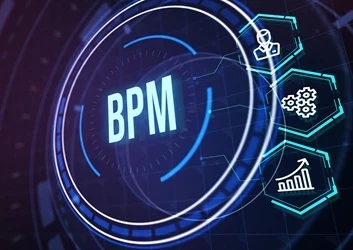Many companies are using BPM and its related software tools (BPMS) to solve small operational problems, says Dan Morris in a new column launched this month. This is like using a race car to go to the corner store – it may get you there quickly, but are you using it to its potential? And are you using too much fuel in the process?
People sit in business operation meetings all the time and leave with different views of what was said. I have found this to be true in follow up discussions and in comments on the meeting minutes that we always send out and require everyone to sign. In BPM meetings, where I spend a lot of time, the problem is not really in poor communication – although that does happen. The problem is in language and the definition of terms – even common industry terms. This causes people to hear different things as the talk is filtered through people’s definitions of the terms and experiences. This causes people to form opinions or jump to conclusions part way through discussions and literally shut down – they don’t hear anything beyond the point they form their opinion.
Not that long ago this point was again driven home to me by business managers and their staff who were in a workshop to define the tasks in their operation. To them everything, even simple, small actions were processes. I tried to tell them that processes were actually large cross functional aggregations of activities that usually wind their way through multiple business units. They said, nope, I was wrong. They wouldn’t budge. So, I adjusted my use of terms in dealing with them. But, I also know that in other groups in the same company process means very different things. Imagine representatives from all the groups in a workshop being told that the company wanted to move to a process centric approach to change and optimization. Some leave thinking this will really affect them, while the people who look at process as couple of steps in a task, wonder why that would be important and think it is no big deal.
If you don’t believe me, and that is fair, perform this test. Identify ten business and BPM terms – like process, workflow, task, performance management, business model, decomposition, rules, etc. Then ask for written definitions. When you compare them you will find a lot of different answers.
Unfortunately, this is one of the many ways BPM is unlike many older disciplines and approaches, BPM has not standardized on term use or definition. To this point, many presenters still define their terms as they start to speak in conferences and training sessions. The Association of Business Process Management Professionals (ABPMP) is just now putting together a BPM dictionary. It will be the first comprehensive one for BPM and because of its international standing; the group hopes that it will become the international standard. But, that will be in the future. Today, different vendors, consulting firms and organizations all have definitions for some terms, but they differ and no one has a comprehensive set of accepted definitions. So, the place to begin this column is with a couple of definitions.
"Business Process Management (BPM) is a management discipline that integrates the strategy and goals of an organization with the expectations and needs of customers by focusing on end-to-end processes. BPM comprises strategies, goals, culture, organizational structures, roles, policies, methodologies, and IT tools to (a) analyze, design, implement, control, and continuously improve end-to-end processes, and (b) to establish process governance." Association of Business Process Management Professionals (ABPMP) Common Body of Knowledge version 3
"A Business Process Management Suite (BPMS) is an integrated suite of software infrastructure technology that addresses business users' desire to see and manage work as it progresses across organizational information. A BPMS supports process modeling, design, development and execution via the runtime environment in one package." Gartner Research
To make things a little more complicated, the jury is still out on just what BPM is and whether you need supporting technology. Some look at BPM as strictly a way to redesign business operations – a new name for BPR. Some look at BPM from an automation perspective and consider it to be a combination of separate or integrated tools such as modelers, rules engines, and web services. Still others who are really technical look at it as Service Oriented Architecture (SOA). At the Association of Business Process Management Professionals (ABPMP), we take a broad look and say all of these are right, but only if they are combined into an integrated business/IT operating environment.
BPM can be a game changer - but are you using it to its potential?
This combination of methods, tools, and techniques make BPM a discipline that is used to control how companies change – hopefully for the better. Together with the BPR techniques and approaches – (e.g., modeling techniques, interviewing techniques, and redesign techniques with different change approaches built on rapid iteration of designs with real time application generation) BPMS tools create a new operating environment that melds business activity with the ability to change quickly.
This environment is supported by a Business Process Management Suite (a group of integrated tools that BPMS based business operations run within) where business models, rules, and defined data are used to generate applications iteratively until an optimum operating model is created. Then this model is put into use (production, where the applications are executed). As the business worker signs onto his or her computer, they enter the BPMS and it presents screens and executes the applications according to the logic in the rules attached to every task. Because of this I call it a BPMS supported BPM Environment.
In fact, once this BPMS supported BPM environment is in place change can happen both interactively and iteratively to deliver near real-time change. Here the process analyst can sit with the business users and walk through their jobs making model and screen (content and presentation) changes in the BPMS models. Rules can also be added or changed in these discussions. The change is then run in simulation and the people try it. They can then make further changes until it works the way they want. Performance can also be measured in these simulations and compromises on ease of use and optimization can be made. This is all real time or interactive between the user and the process analyst. Once agreed upon, the simulated version is put through a test cycle and then into production. This all can happen very fast – a few hours to a few days depending on testing and the impact of the change on interfaces to obtain data from legacy applications.
This ability to change quickly and in a controlled manner is what makes this environment different and extremely valuable – it is what makes it a game changer.
Right now most companies are still using BPM and BPMS’ to solve small operational problems. Can it do this? – absolutely. But, this is analogous to using a race car to go to the corner store. Can it get you there? – yep and quick. But, is it being used to its fullest? Is it delivering its potential? Of course not. Is it also using too much gas to get you there? Yep, again. But, that is where a lot of companies are. The problem is that many do not realize they have a race car and see only a fashionable way to solve a problem. But, that is changing as people see the speed they can get from a BPMS supported BPM environment.
But, to help improve a company, it must be realized that not all change is good. Change can be a waste of time and change that is not properly designed or executed is usually harmful. Change that only automates the old ways is just as bad – but that is what happens when the project is not based on a redesigned new business operation and when enabling technology is not used. Part of the reason for this is that change has been really hard in the past. It has taken place slowly and it has caused a lot of problems for people – as a result they usually don’t like it, are afraid of it, and often try to make it fail. This has caused a lot of invisible overhead in the staff. The BPM race car is pulling this around like a trailer. But, as BPM successes increase in number, frequency, and benefit, the load is being taken off and people are beginning to see the beauty of the race car and understand the power under its hood.
[inlinead]
The speed and quality that is delivered from this rapid iteration approach is the key to creating a nimble operation and real optimization. Using my race car analogy further, building IT applications in the past evolved from the speed and capability of a model T (some, but not much – however, it made things possible), to the improved capability of a family SUV (bigger, better, more capable, but still not very flexible or fast). But, its capabilities were still limited and not really tied all that well to its use – it was a compromise between utility and flexibility (building IT applications was faster, but changing them was still slow and risk was high). Now with the power of BPMS, speed and flexibility are delivered making rapid change and continuous improvement a reality.
Over the upcoming months I will look into these points and more in greater detail. I hope that you will find value and maybe from time to time some humor in this column. But, as with anything we do, feedback is critical. So, practicing what I preach, I would like comments on the column. I would also like to urge you to join the ABPMP LinkedIn discussion group and when you are ready ABPMP itself. But, that will be a future column. Thanks for taking the time to look this over. I hope it has given you something to think about – that is my real goal.
Unlocking your BPM potential can be a difficult nut to crack. Often it is difficult to know where to start or current BPM’s can be hit by lagging software. PEX networks’ upcoming BPM open house is a free online event which aims to deal with these issues and more. Presenters including Will Barrett Senior Operations Officer, Bank of Tennessee will be giving critical advice on all the current BPM issues; we hope you can join us.




















